One of the most well-known and widely used herbs, both in cooking and in natural medicine: thyme, charmingly called farigoule in the South of France, is a perennial that thrives in poor soils and warm conditions. To enjoy its benefits and fragrance all year round, drying is the best preservation method. Here are our tips for drying thyme, storing it, and using it in cooking or for its many properties.
Harvesting thyme for drying
Thyme can be harvested year-round, as its leaves are evergreen, but its fragrance and active compounds are most potent at the start of flowering in spring (from March to June, depending on the region).
Therefore, the ideal time to harvest thyme for drying is during this period or just before flowering.
Pick thyme in the morning, after the dew has evaporated and on a sunny day, for optimal drying.
To harvest, simply use secateurs or scissors to cut the stems to a third of their length (about 10 to 15 cm), preferring the green shoots of the current year to encourage regrowth.
All thyme varieties are suitable for drying: lemon thyme, common thyme, orange thyme, officinal thyme, Provence thyme, …
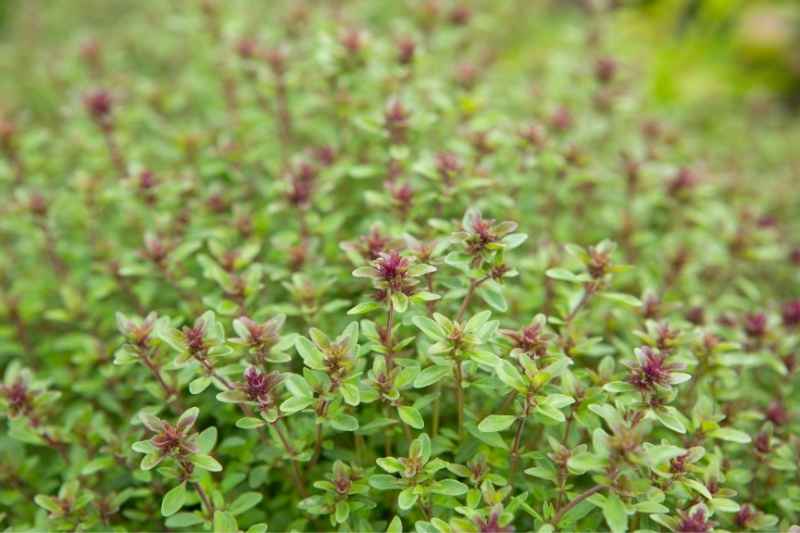
Two methods for drying thyme
Whichever method you choose, first rinse the stems in clean water and pat them dry with a cloth to remove excess moisture and facilitate drying.
Air drying
This drying technique takes longer but is 100% natural and economical. Gentle drying through warmth and air circulation also helps preserve the plant's aromas and active compounds.
- Bundle the stems into small bunches of about ten sprigs, tied loosely with string to allow good air circulation.
- Hang them upside down in a dry, dark place. If a light-free location isn’t possible, wrap the bunches in a perforated paper bag.
You can also spread the stems on newspaper or a crate…
Drying time depends on ambient conditions. Allow one to two weeks for complete drying. Once dry, the leaves crumble easily between your fingers.
Thyme flowers can be dried the same way, but as they are more delicate and their aromas more volatile, we recommend using them fresh.
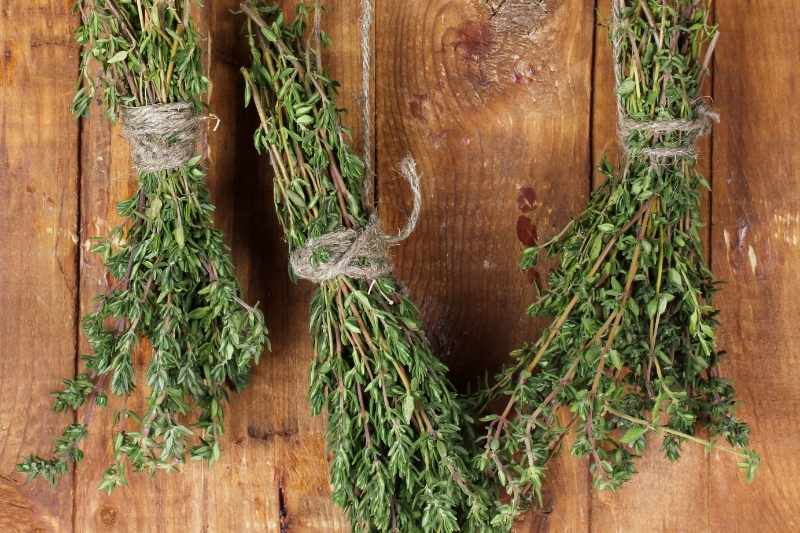
Oven drying
Oven drying thyme is a quicker method but may degrade essential oils and alter the plant’s fragrance.
- Place the stems on a baking tray lined with parchment paper or foil, ensuring they don’t overlap.
- Put them in the oven at 50°C.
- Leave the door slightly ajar to let moisture escape.
- Check the drying progress regularly.
Allow a few hours for complete drying, which is finished when the leaves crumble easily between your fingers.
You can also use a dehydrator or dry thyme in the microwave by wrapping the stems in absorbent paper. However, this method is trickier, as slightly over-drying or poor control may "cook" the branches.
Storing dried thyme
After drying, strip the thyme to keep only the leaves. If drying is optimal, simply run your fingers along the stem to detach them easily.
Store the leaves in airtight containers (glass jars, metal tins…).
You can also keep the hanging bunches.
Dried thyme keeps for about a year in a dark, dry place.
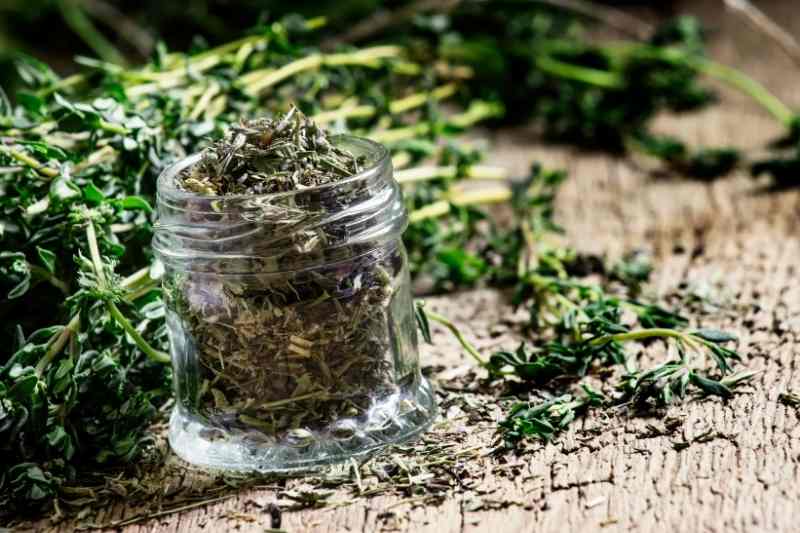
Using dried thyme
Thyme is used in many ways in cooking: in the famous bouquet garni, added to tomato sauces or marinades, on roasted vegetables, grilled meats or fish, in salads, homemade bread or pasta, to flavour stuffings, sprinkled on goat’s cheese, infused in oil, vinegar or honey, and even in desserts (it pairs deliciously with strawberries or apricots, for example).
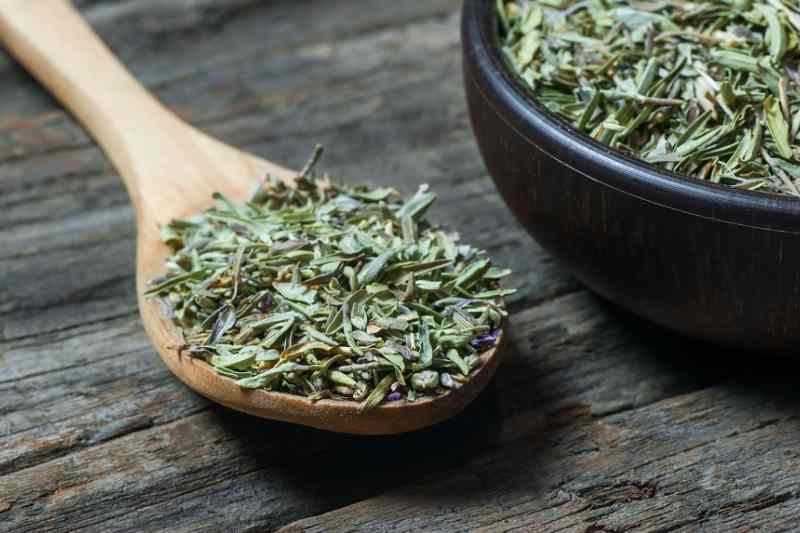
Making thyme tea
Thyme tea is a tonic drink that stimulates the immune system. Combined with a spoonful of honey, lemon juice and cinnamon, it’s ideal for combating winter ailments.
Lemon thyme is often used for infusions, but other varieties work just as well.
- Add a teaspoon of thyme to a cup of boiling water.
- Steep for 10 to 15 minutes.
- Strain or remove the tea infuser.
- Enjoy 2 to 3 times a day.
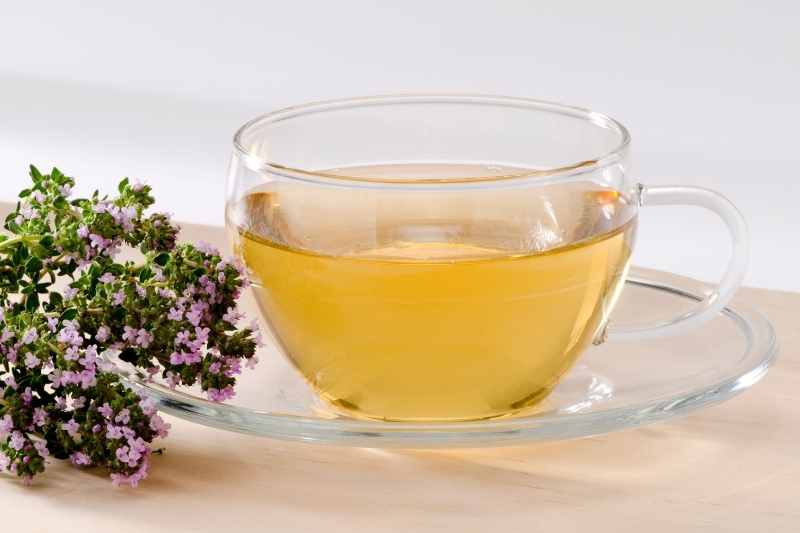
The benefits of thyme
Thyme is valued for its many natural properties: antiseptic, antibacterial, tonic, detoxifying and antispasmodic.
It is recommended for respiratory tract infections (as tea or inhalation), urinary infections, stress and fatigue, weakened immunity, digestive issues or spasms.
To learn more
Read our other articles:
- How to soothe a sore throat with thyme?
- For successful thyme cultivation: Thyme: growing, planting, pruning
- How to grow thyme in a pot?
- How to treat a cold naturally with thyme?































Comments